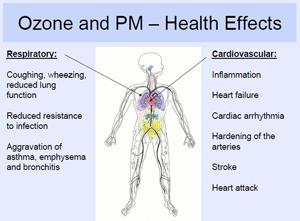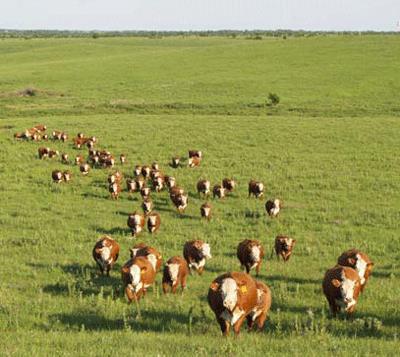Health Resources
Smoke from prescribed burning can affect air quality both nearby and in downwind locations. The health of both humans and animals is affected by poor air quality. When wind transport conditions are right, smoke can impact urban areas and present a health risk to sensitive individuals. A major goal of the Kansas Flint Hills Smoke Management Plan is to reduce the incidence of low-quality air events related to prescribed burning in the Flint Hills. Monitors in urban areas measure concentrations of ozone and particulate matter, the two major air quality concerns related to prescribed burning, between April 1 and October 31.
Smoke and Human Health
 When Smoke Is In The Air
When Smoke Is In The Air- Kansas Health Alert Network
- EPA Fire and Smoke Map
- Protect Yourself from Wildfire Smoke
- Ozone and Your Health - EPA Fact Sheet - (PDF)
- Particulate Pollution and Your Health - EPA Fact Sheet - (PDF)
- Asthma Information- ACAAI
- Asthma - CDC
- Kansas Asthma Burden Report (PDF)
KS-HAN is a secure, web-based electronic communication system that enables local and state emergency health and safety entities to share public and environmental health and general emergency preparedness information rapidly. Membership in KS-HAN is by invitation only.
Purple Air Sensor Loan Program
Purple Air monitors that detect PM2.5 are available for loan by EPA. If your organization (i.e., county emergency management) would like to borrow one, please fill out the application and email it to R7_Sensor_Loan@epa.gov. Data are for your use and do not need to be shared. A guidebook for data collection and other related materials can be found at: https://www.epa.gov/air-sensor-toolbox
Smoke and Animal Health
Most producers move their cattle to an area where they will not be affected by the smoke from pasture burning. Or, if cattle are located downwind, they are placed far enough away that smoke inhalation is minimized.
During wildfires, some animals continue to graze near the fire even when they have the ability and freedom to move a great distance away. They seem to know that if it is not approaching them directly, it is not a big problem.
Fences may be destroyed during wildfire and livestock can wander many miles. Or fences can restrict livestock movement, causing cattle to bunch up along the fence while trying to escape, leading to numerous mortalities during the wildfire. Prescribed burning allows for livestock protection when needed as compared to the emergency situation during wildfires.
 Wildfires, Smoke and Livestock - School of Veterinary Medicine, University of California, Davis (PDF)
Wildfires, Smoke and Livestock - School of Veterinary Medicine, University of California, Davis (PDF)
The effects of smoke are similar for humans and livestock: irritation of the eyes and respiratory tract, aggravation of chronic lung diseases, and reduced lung function. High concentrations of particulates can cause persistent cough, increased nasal discharge, wheezing and increased physical effort in breathing. Particulates can also alter the immune system and reduce the ability of the lungs to remove foreign materials, such as pollen and bacteria, to which livestock are normally exposed.
Inhalation of smoke causes immediate irritation to the lining of the respiratory system, including nasal passages, trachea and lungs (of animals). This can lead to inflammation, edema and emphysema, with the severity determined by the duration of inhaled smoke.
The time it takes to cause damage might only have to be a few minutes with high quantities of smoke and may be hours in low quantities of smoke. In addition, the lining of the eyelids and eyeballs can be irritated and lead to secondary infections causing additional illness or even death. Impacts of smoke are exacerbated by heat stress and by pre-existing respiratory disease.